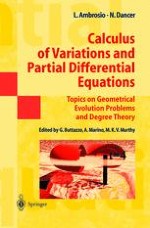2000 | Book
Calculus of Variations and Partial Differential Equations
Topics on Geometrical Evolution Problems and Degree Theory
Authors: Luigi Ambrosio, Norman Dancer
Editors: Giuseppe Buttazzo, Antonio Marino, M. K. V. Murthy
Publisher: Springer Berlin Heidelberg
Included in: Professional Book Archive
